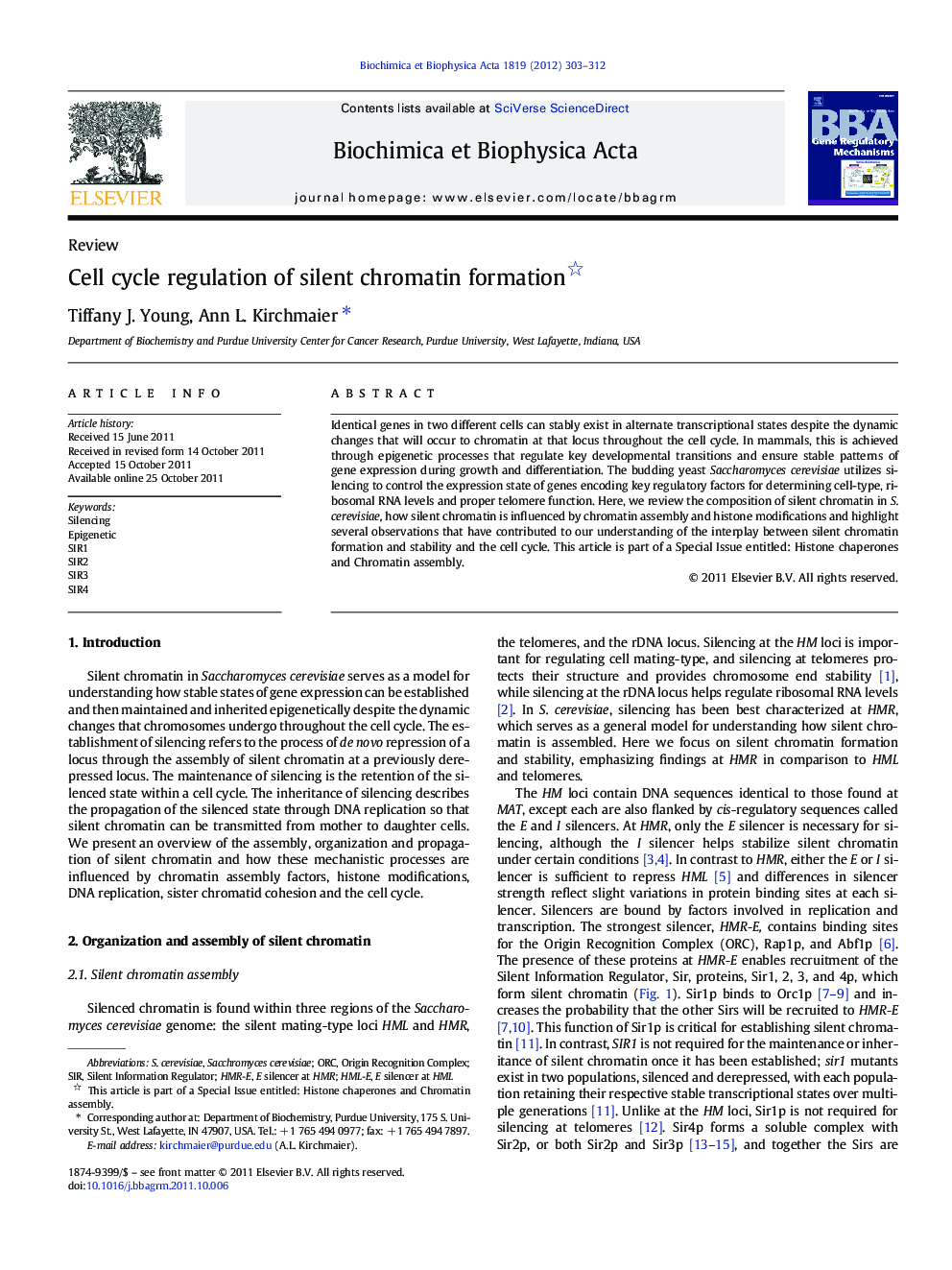| Article ID | Journal | Published Year | Pages | File Type |
|---|---|---|---|---|
| 1946535 | Biochimica et Biophysica Acta (BBA) - Gene Regulatory Mechanisms | 2012 | 10 Pages |
Identical genes in two different cells can stably exist in alternate transcriptional states despite the dynamic changes that will occur to chromatin at that locus throughout the cell cycle. In mammals, this is achieved through epigenetic processes that regulate key developmental transitions and ensure stable patterns of gene expression during growth and differentiation. The budding yeast Saccharomyces cerevisiae utilizes silencing to control the expression state of genes encoding key regulatory factors for determining cell-type, ribosomal RNA levels and proper telomere function. Here, we review the composition of silent chromatin in S. cerevisiae, how silent chromatin is influenced by chromatin assembly and histone modifications and highlight several observations that have contributed to our understanding of the interplay between silent chromatin formation and stability and the cell cycle. This article is part of a Special Issue entitled: Histone chaperones and Chromatin assembly.
► Histone modifications, chromatin assembly and replication influence silent chromatin. ► The establishment of silencing is regulated during the cell cycle. ► The stability of silent chromatin varies during the cell cycle. ► Silencers affect establishment and enhance the stability of silent chromatin. ► Promoter, cohesin and locus-specific effects on the establishment of silencing exist.
